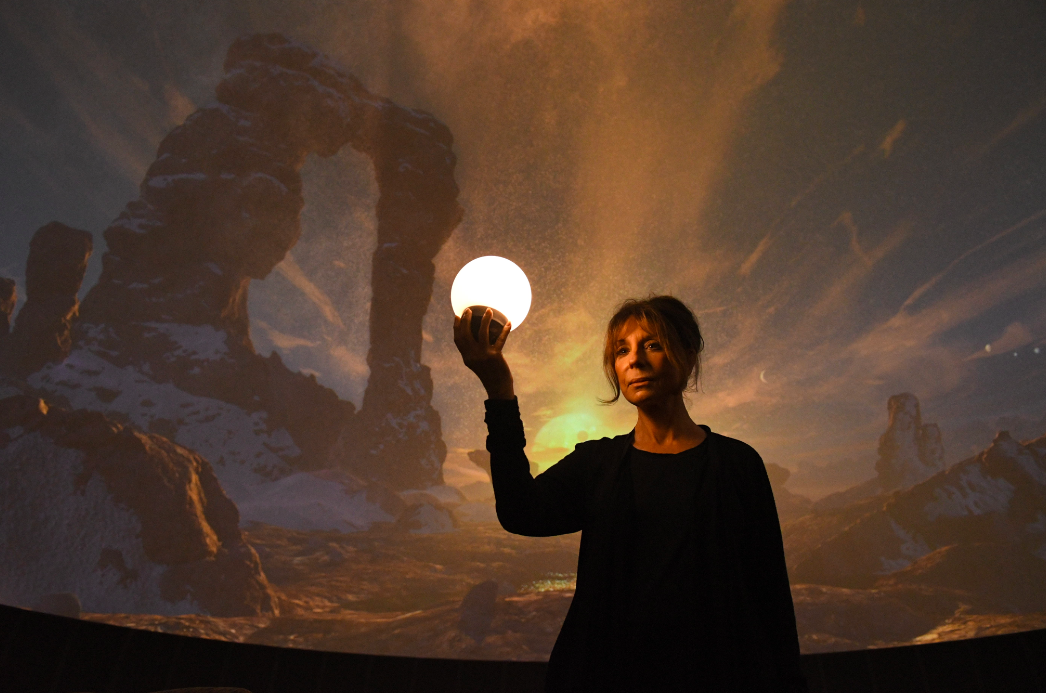Fun Facts About Griffith Observatory
A collection of statistics, superlatives, stories about Los Angeles’s favorite public building.


Observatory Dimensions
The depth of the above-ground Observatory building (north/south wall to wall) is 176 feet. The width of the building is 236 feet (not counting the terrace ramps, which each add another 10 feet). The height of the building from the front lawn to the top of the main dome is 77 feet and to the top of the telescope dome is 55 feet. The original Observatory building had approximately 27,000 square feet of interior space. The renovated and expanded building has roughly 67,000 square feet, including nearly triple the amount of exhibit gallery space.

Live Storytelling
Griffith Observatory is one of the only major facilities in the world that still produces exclusively live planetarium shows. Over 100,000 shows have been presented since the building opened in 1935. Former Observatory Director Clarence Cleminshaw presented more than 8,000 planetarium shows during his 33 years on staff.

Stellar Projections
The Observatory’s Zeiss Mark II planetarium projector was used for the Observatory’s first 29 years of operation (1935-1964); it is now on display at a museum in Baton Rouge. It was replaced in 1964 by the Zeiss Mark IV, which was used for over 37 years (1964-2002), nearly double its design lifetime; it is now on display as part of Griffith Observatory’s exhibit program. In the 1990s, Observatory staff had to customize streetlight bulbs for use in the Zeiss Mark IV projector because the original bulbs were no longer produced.

Design with Meaning
Griffith Observatory was designed and built with clear intent as to its purpose and meaning. For example, the original building was laid out so that its major axes are aligned north-south and east-west. During the renovations and expansion, the new Gottlieb Transit Corridor was also aligned north-south, enabling the creation of the bronze Griffith Observatory meridian line. The architects designed the stairway railing from the corridor to the lawn to point at the North Star.

#1 in the World
Over eight million people have looked through the Observatory’s 12-inch Zeiss telescope, more than through any other telescope on Earth. One of the former telescope demonstrators, Kirk Palmer, personally showed the heavens to nearly 950,000 people. More people have seen the live image of the Sun on the Observatory’s coelostat than on any other solar telescope on Earth. All public telescope viewing at the Observatory is always free.

Hollywood Star
Griffith Observatory is one of the region’s premier film locations. It has appeared in hundreds of film and television productions, most notably Rebel Without a Cause starring James Dean in 1955. There is a bust of James Dean’s head on the Observatory’s grounds.

Navigating by the Stars
World War II aviators and Apollo astronauts trained in Griffith Observatory’s planetarium theater to learn how to navigate by the stars. The chair the astronauts used in the planetarium is on display at the Observatory today, in the Gunther Depths of Space exhibit gallery.